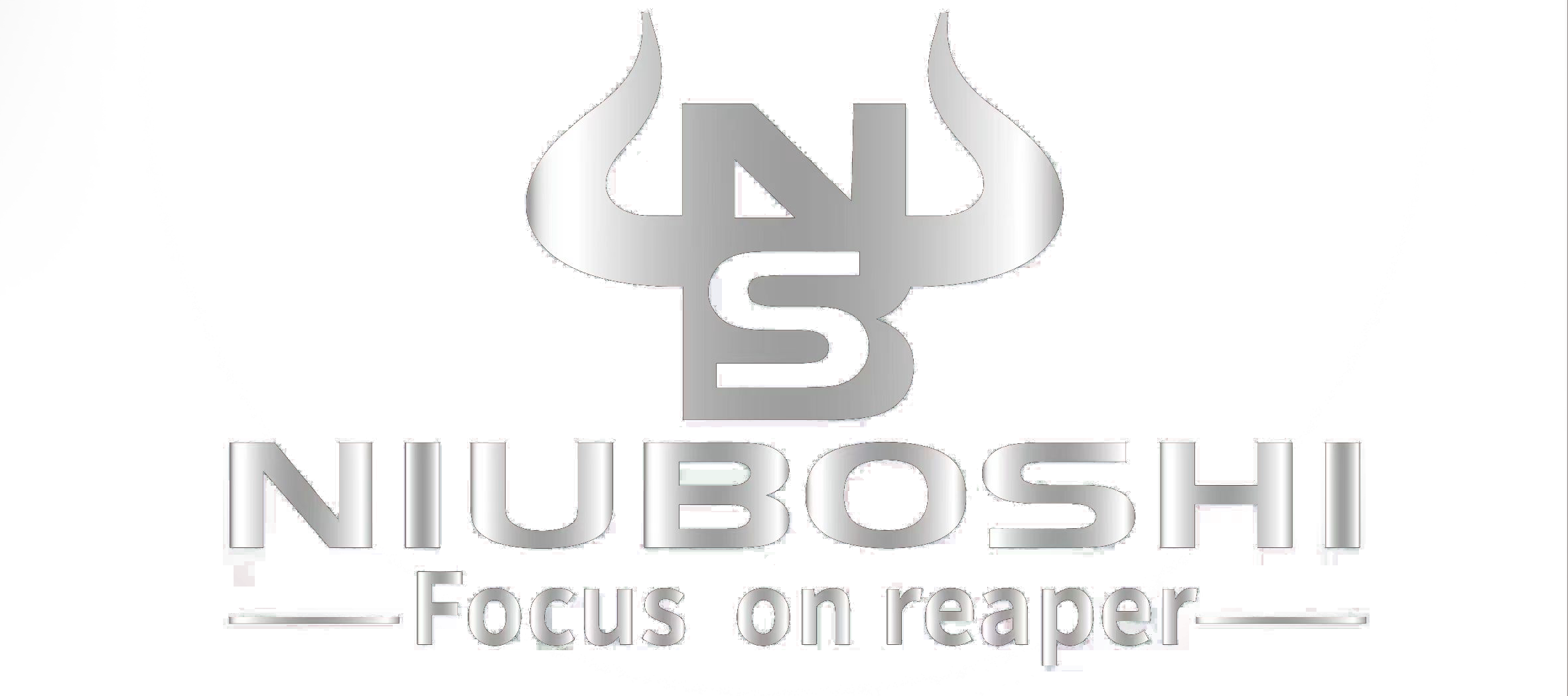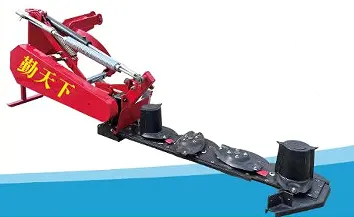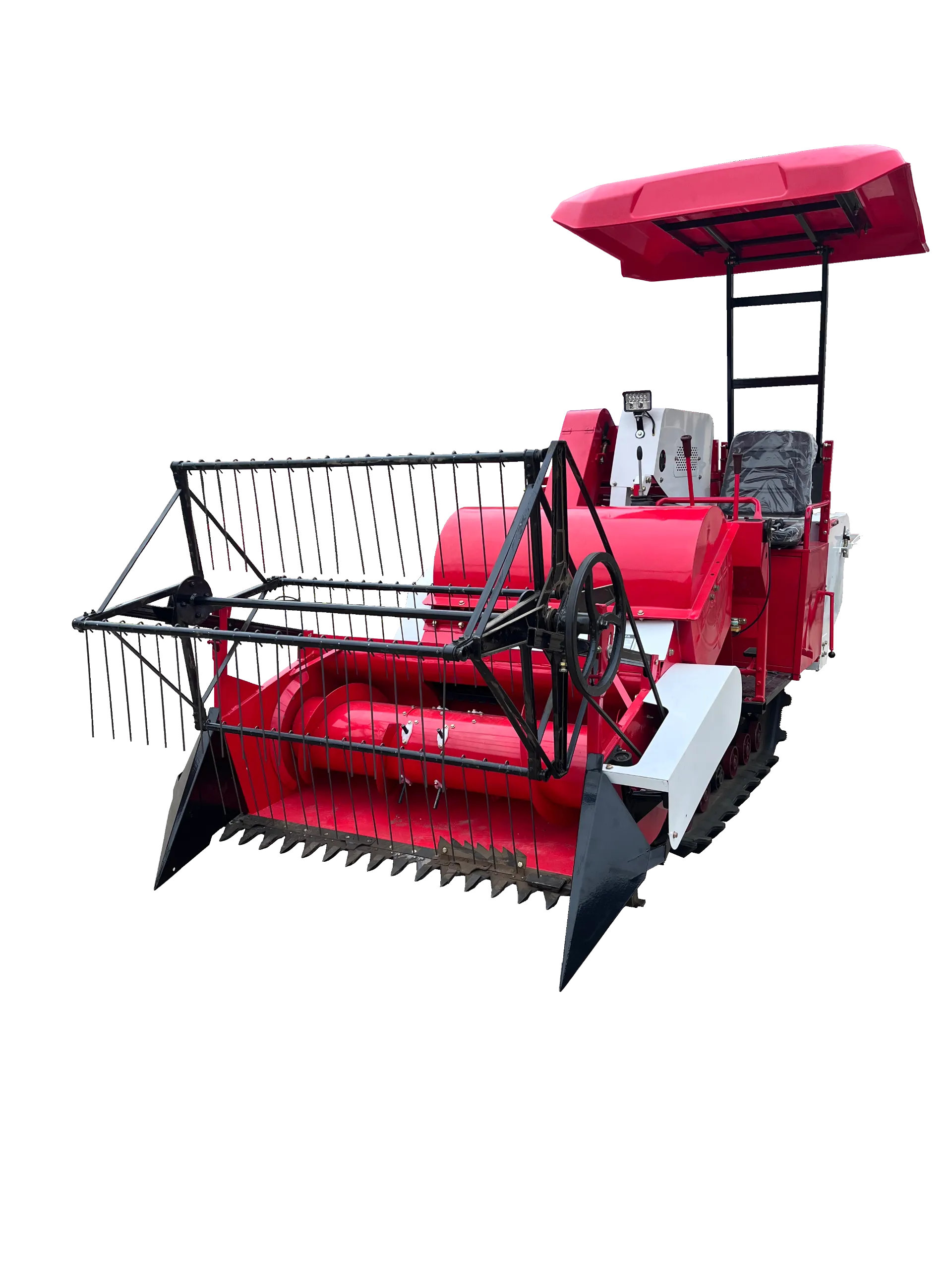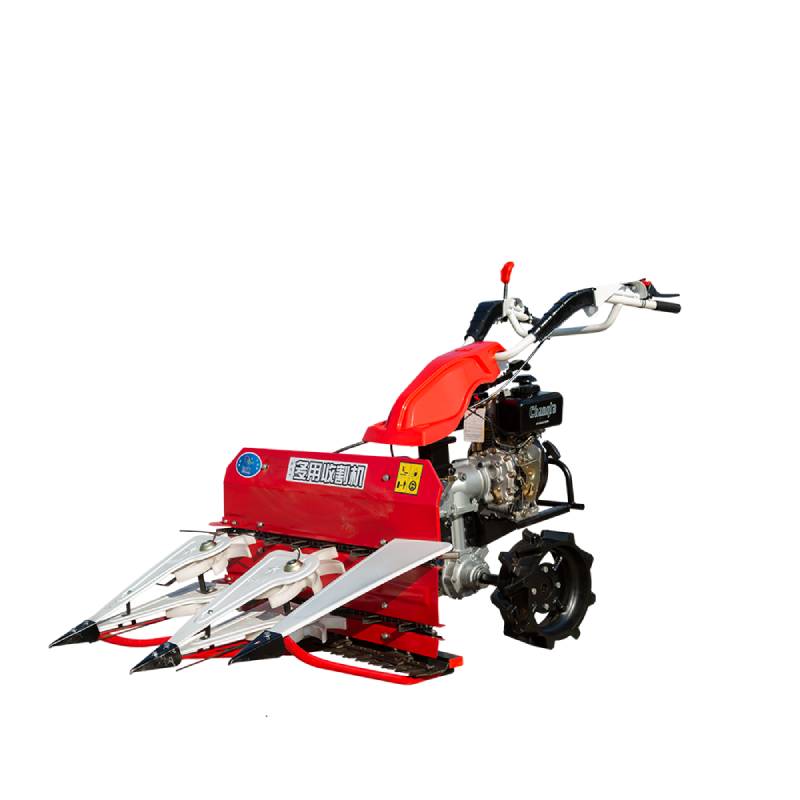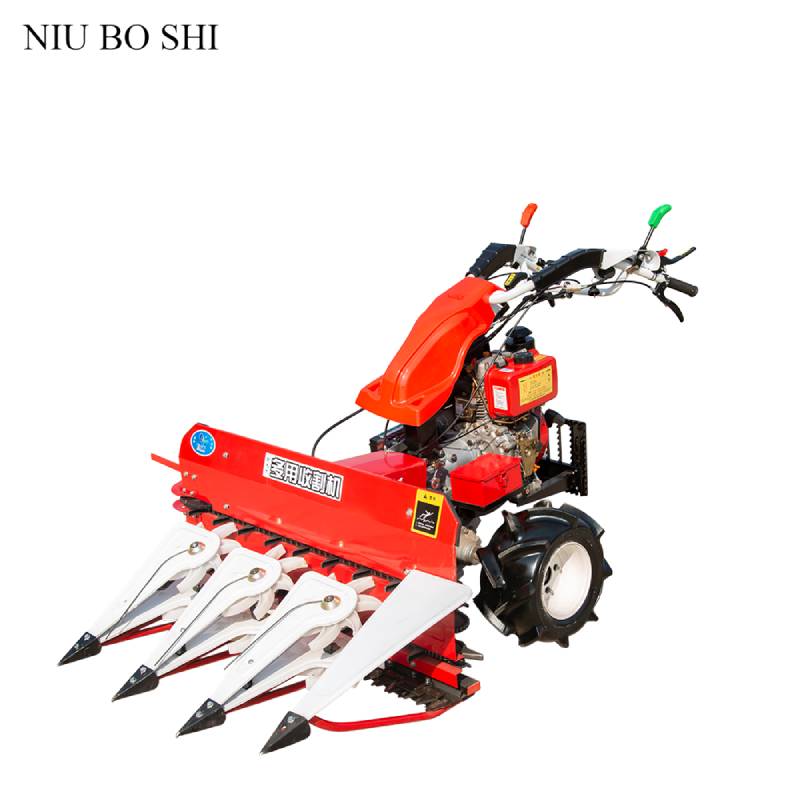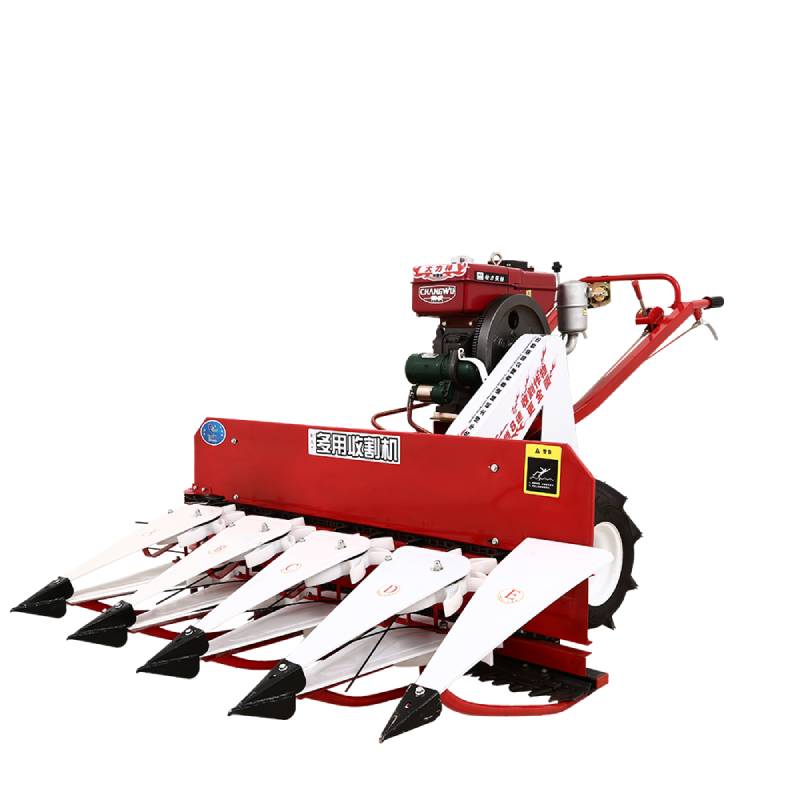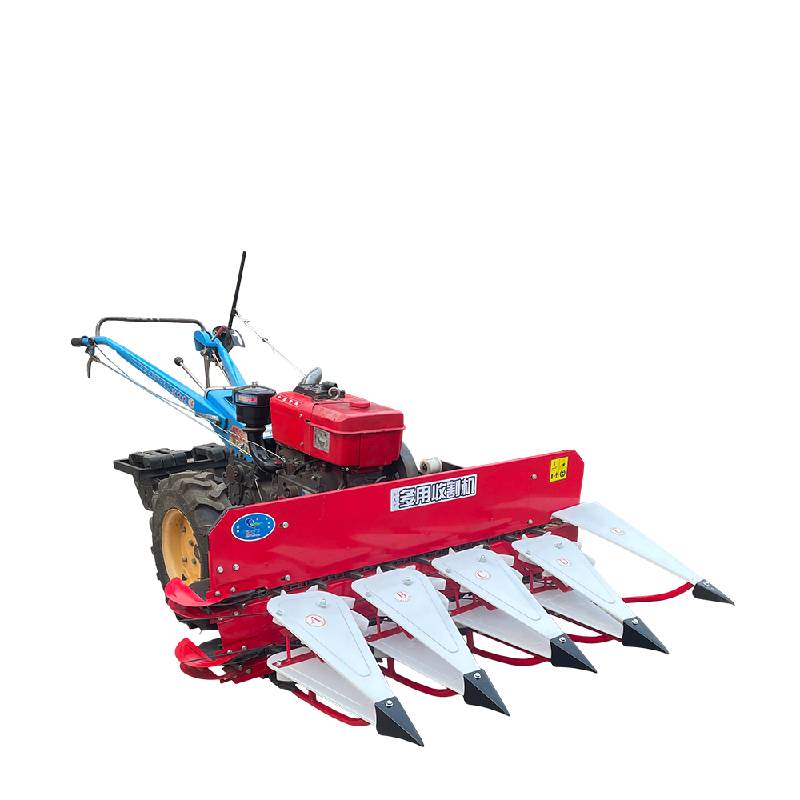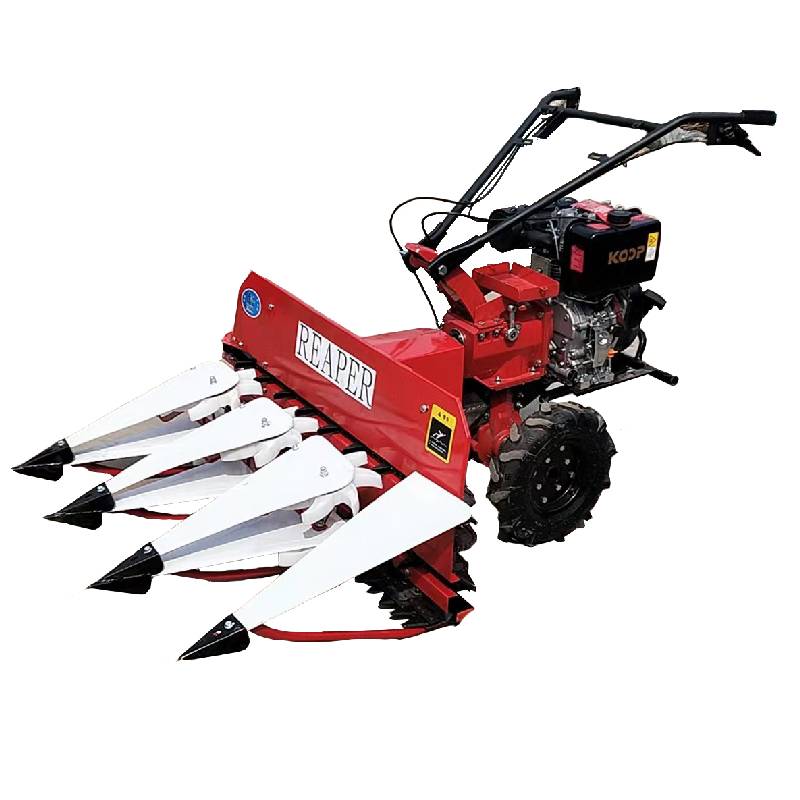Reliable Reaper Machines: Farm & Rice Harvest Solutions
The Evolution of Harvest: Mastering Agricultural Efficiency with the Modern Reaper Machine
In the relentless pursuit of agricultural productivity, the humble yet indispensable reaper machine stands as a cornerstone of modern farming. From small family plots to vast commercial enterprises, these machines have revolutionized the harvesting process, significantly reducing labor, minimizing crop loss, and accelerating the path from field to market. This comprehensive guide delves into the world of reaper machine technology, exploring industry trends, technical advancements, application versatility, and the crucial factors that define a superior harvesting solution.
Industry Trends: Shaping the Future of Harvesting
The agricultural sector is undergoing a profound transformation, driven by demands for increased food production, labor efficiency, and environmental sustainability. Several key trends are influencing the development and adoption of the reaper machine:
- Precision Agriculture Integration: Modern reapers are increasingly incorporating GPS, sensor technology, and AI-driven systems to optimize cutting height, adjust to varying crop densities, and provide real-time yield mapping. This allows for highly precise and resource-efficient harvesting.
- Automation and Autonomy: While fully autonomous reapers are still emerging, advancements in semi-automation are common, reducing operator fatigue and improving consistency. The future promises greater levels of robotic assistance in the field.
- Energy Efficiency and Sustainability: Manufacturers are focusing on developing more fuel-efficient engines (for internal combustion models) and exploring electric or hybrid power sources to reduce carbon footprints and operational costs.
- Versatility and Adaptability: Farmers need machines that can handle multiple crop types and varying field conditions. The demand for adaptable reaper machine models that can be easily configured for rice, wheat, soybean, or even specialty crops is rising.
- Digital Connectivity: Telematics and IoT (Internet of Things) enable remote monitoring, predictive maintenance, and data analysis, allowing farmers to make informed decisions and minimize downtime.
According to a report by MarketsandMarkets, the global agricultural machinery market size is projected to grow from USD 108.3 billion in 2023 to USD 146.5 billion by 2028, at a CAGR of 6.2%. This growth is significantly driven by the mechanization of harvesting processes, underscoring the vital role of the reaper machine.
Understanding the Core: Technical Parameters of a Modern Reaper Machine
The effectiveness of a reaper machine is defined by its specifications and performance metrics. Understanding these parameters is crucial for selecting the right equipment for specific agricultural needs:
- Engine Power: Measured in horsepower (HP) or kilowatts (kW), this indicates the machine's ability to drive the cutting mechanism and propel itself. Higher power is needed for denser crops or larger cutting widths.
- Cutting Width (Header Width): This is the width of the area the machine can harvest in a single pass. Wider headers increase efficiency for large fields, reducing the number of passes required. Common widths range from 0.8 meters for a hand reaper machine to over 4 meters for larger farm reaper machine units.
- Harvesting Capacity: Often expressed in acres per hour or tons per hour, this metric combines cutting width, speed, and efficiency to indicate the machine's overall productivity.
- Fuel Consumption: Measured in liters per hour or gallons per hour, this is a key operational cost factor. Modern engines aim for optimal fuel efficiency without sacrificing power.
- Weight and Dimensions: Important for maneuverability, transport, and suitability for different soil types (to avoid compaction).
- Blade Type and Material: The quality of the cutting blades significantly impacts performance and longevity. High-carbon steel or alloy steel blades are common, often with specialized coatings for wear resistance.
- Crop Compatibility: Specific reapers are designed for different crops. A rice reaper machine might have specialized features like wider track wheels for paddy fields or specific augers for rice straw.
Comparative Analysis of Reaper Machine Types
To further illustrate the diversity and capabilities, here's a table comparing various reaper machine types based on key parameters:
| Parameter | Hand Reaper Machine (e.g., Mini Reaper) | Walk-Behind Reaper Machine | Self-Propelled Reaper Machine (Medium) | Farm Reaper Machine (Large Scale) |
|---|---|---|---|---|
| Typical Engine Power | 1.5 - 3 HP (Petrol/Diesel) | 3 - 8 HP (Petrol/Diesel) | 10 - 25 HP (Diesel) | 50 - 150+ HP (Diesel) |
| Cutting Width | 0.8 - 1.2 meters | 1.0 - 1.5 meters | 1.8 - 2.5 meters | 3.0 - 4.5+ meters |
| Harvesting Capacity (Approx.) | 0.5 - 1 acre/day | 1 - 2 acres/day | 3 - 6 acres/hour | 8 - 15+ acres/hour |
| Typical Cost Range (USD) | $500 - $1,500 (Lower reaper machine cost) | $2,000 - $6,000 | $15,000 - $40,000 | $80,000 - $250,000+ |
| Primary Application | Small plots, hilly terrain, subsistence farming | Small to medium farms, diverse crops, manual control | Medium to large farms, commercial use, higher efficiency | Large commercial farms, extensive acreage, high automation |
| Key Advantage | Portability, low cost, simple operation | Maneuverability, versatility, relatively low cost | High efficiency, good balance of cost/performance | Maximum output, reduced labor, advanced features |
Note: All cost ranges are approximate and subject to market fluctuations, features, and brand. The reaper machine cost is a significant factor in purchasing decisions.
Trailbreaker Reaper: Precision, Durability, Performance
At the forefront of modern harvesting technology is the Trailbreaker reaper. Engineered for maximum efficiency and longevity, this state-of-the-art machine represents the culmination of advanced design, robust materials, and meticulous manufacturing processes. Designed to tackle diverse agricultural challenges, the Trailbreaker reaper ensures optimal yield and reduced operational overhead for farmers worldwide.
Product URL: https://www.hbniuboshi.com/trailbreaker-reaper.html
Crafting Excellence: The Manufacturing Process of the Trailbreaker Reaper
The superior performance and enduring quality of the Trailbreaker reaper machine are a direct result of its sophisticated manufacturing process. Each stage is meticulously controlled to ensure adherence to the highest international standards, including ISO 9001 for quality management and CE certification for safety compliance. The process ensures exceptional durability, prolonged lifespan, and reliable operation even in the most demanding agricultural environments.
Manufacturing Flow: From Raw Material to Ready Machine
Material Sourcing & Quality Inspection
High-grade raw materials, primarily specialized high-strength alloy steels (e.g., 40Cr, 35CrMo for critical structural components, and high-carbon spring steel for blades) are sourced from certified suppliers. Incoming materials undergo stringent quality checks, including spectrographic analysis for composition, ultrasonic testing for internal defects, and hardness tests to ensure they meet the precise mechanical properties required for a robust reaper machine.
Precision Fabrication (Laser Cutting & Bending)
Components are precisely cut from steel sheets using advanced CNC laser cutting machines, ensuring high accuracy and minimal material waste. This is followed by CNC bending for structural frames and enclosures, guaranteeing dimensional accuracy and perfect fit during assembly. Tolerances are held to within ±0.05mm for critical parts.
Advanced Machining (CNC Milling & Turning)
Key functional parts such as shafts, gears, and intricate housings are subjected to multi-axis CNC machining (milling and turning). This process ensures tight tolerances, smooth finishes, and optimal performance for moving components. Blade mounting points and gear teeth are precisely engineered to maximize efficiency and minimize wear, contributing directly to the reaper machine's longevity.
Heat Treatment & Surface Finishing
Components subjected to high stress or wear, particularly cutting blades and gear teeth, undergo specialized heat treatments (e.g., quenching and tempering, carburizing) to enhance their hardness, toughness, and wear resistance. Following this, parts receive protective surface finishes like powder coating for corrosion resistance, electroplating, or specialized anti-friction coatings to extend operational life and maintain aesthetics.
Robotic Welding & Assembly
Structural elements are joined using robotic welding, ensuring consistent weld quality, strength, and integrity. Sub-assemblies (e.g., cutting mechanisms, transmission units) are then carefully put together by skilled technicians, followed by the final assembly of the entire reaper machine. Each critical joint and connection is torqued to specification.
Comprehensive Quality Assurance & Testing
Before leaving the factory, every Trailbreaker reaper undergoes a rigorous multi-point inspection and testing protocol. This includes:
- Functional Testing: Operation of all systems (engine, transmission, cutting mechanism, controls) under load conditions.
- Vibration Analysis: To detect potential imbalances or defects.
- Noise Level Measurement: Ensuring compliance with safety and environmental standards.
- Durability Cycle Testing: Select units are subjected to prolonged operational cycles to simulate real-world wear and tear, validating projected lifespan.
- Safety Feature Verification: Checking all guards, emergency stops, and warning systems.
Packaging & Dispatch
Once certified, the Trailbreaker reaper machine is carefully packaged to prevent damage during transit, utilizing robust crates and protective wrapping. It is then dispatched, ready to enhance agricultural productivity worldwide.

The Trailbreaker reaper machine demonstrating its efficiency in a rice field.
Applicable Industries and Advantages of the Trailbreaker Reaper
While the core application of the reaper machine is in agriculture, its precise design makes the Trailbreaker suitable for various farming scales and crop types. Its technical advantages translate directly into significant benefits for users:
- Applicable Industries/Crops: The Trailbreaker reaper is primarily designed for harvesting grain crops such as rice reaper machine applications, wheat, barley, oats, soybeans, and other small grains. Its adaptability extends to various field conditions, from dry land to moderately wet paddy fields.
- Enhanced Efficiency: With optimized cutting mechanisms and powerful engines, the Trailbreaker significantly reduces harvesting time. This translates to higher throughput, allowing farmers to harvest more acreage in less time, especially critical during narrow weather windows.
- Reduced Crop Loss: Precision engineering of the cutting bar and conveying system minimizes shattering and lodging, ensuring maximum collection of harvested grain. This directly impacts yield and profitability.
- Superior Durability and Longevity: Thanks to the use of high-strength materials and rigorous manufacturing processes, the Trailbreaker reaper machine boasts an extended operational lifespan, typically exceeding 5,000 hours with proper maintenance, significantly outperforming many competitors. Components are designed for years of heavy use, resisting wear and tear from abrasive crop materials and demanding field conditions.
- Ease of Operation and Maintenance: Ergonomic controls and intuitive design make the Trailbreaker reaper user-friendly. Furthermore, its modular design allows for easier access to components for routine maintenance and part replacement, minimizing downtime and reducing overall reaper machine cost of ownership.
- Safety Features: Equipped with multiple safety guards, emergency stop buttons, and clear operational instructions, the Trailbreaker prioritizes operator safety in the field.
Application Scenarios: Where Trailbreaker Excels
The versatility of the Trailbreaker reaper machine allows it to perform optimally across diverse agricultural landscapes:
- Small and Medium-Sized Farms: For family farms seeking to mechanize their operations and reduce reliance on manual labor, the Trailbreaker offers an ideal balance of performance and affordability compared to larger, more complex harvesting machinery. Its maneuverability makes it suitable for irregularly shaped fields.
- Commercial Grain Production: Larger versions of the Trailbreaker, designed as a robust farm reaper machine, can meet the high-capacity demands of commercial grain producers, enabling timely and efficient harvesting of vast fields.
- Rice Paddy Fields: With optional wider tires or tracks and specialized conveying systems, the Trailbreaker can be configured as an effective rice reaper machine, navigating muddy conditions and handling the unique characteristics of rice stalks.
- Hilly or Undulating Terrain: The balanced design and powerful engine provide the necessary traction and stability for harvesting in challenging topographies where larger combines might struggle or be impractical.
- Seed Production: Its precise cutting and gentle handling capabilities make it suitable for harvesting delicate seed crops where minimizing damage is paramount.
Choosing Wisely: Manufacturer Comparison and Why Trailbreaker Stands Out
When investing in a reaper machine, farmers face a plethora of choices. Distinguishing between manufacturers based on quality, innovation, and support is critical. While many brands offer basic functionality, a truly superior manufacturer excels in several key areas:
- Research & Development (R&D): Leading manufacturers continuously invest in R&D to innovate and improve their products. Trailbreaker's commitment to R&D ensures that our reaper machine incorporates the latest advancements in engine technology, cutting efficiency, and automation.
- Quality Control and Certifications: Adherence to international standards like ISO 9001, ANSI, and CE certifications demonstrates a manufacturer's commitment to consistent quality. Trailbreaker's internal testing protocols exceed industry benchmarks, with dedicated teams performing rigorous field trials.
- Material Science: The choice of materials directly impacts durability. Manufacturers using high-grade, specifically engineered alloys for critical components will offer longer-lasting machines.
- After-Sales Support & Parts Availability: A reliable manufacturer provides comprehensive after-sales service, readily available spare parts, and responsive technical support. Trailbreaker maintains an extensive global network of authorized dealers and service centers, ensuring minimal downtime for our customers.
- Customer-Centric Design: Feedback from farmers should drive product evolution. Trailbreaker actively engages with its user base to refine designs for ease of use, maintenance, and overall operator comfort.
The Trailbreaker reaper distinguishes itself through its unmatched blend of precision engineering, rugged durability, and an unwavering commitment to customer satisfaction. Our long-standing presence in the agricultural machinery sector, coupled with our consistent achievement of customer performance metrics, solidifies our position as a preferred choice for a reliable farm reaper machine.
Tailored Solutions: Customization and Bespoke Reapers
Recognizing that no two farms are identical, Trailbreaker offers a range of customization options and collaborates with clients on bespoke solutions for their reaper machine needs. This ensures optimal performance tailored to specific agricultural conditions and budgetary considerations:
- Engine Configuration: Options for different power outputs and fuel types (e.g., diesel, petrol, or even electric variants for specific markets).
- Header Attachments: Interchangeable headers optimized for various crops (e.g., specialized rice reaper machine headers, wheat headers, or wider headers for larger acreage).
- Wheel/Track Options: Standard pneumatic tires, wider flotation tires for soft ground, or rubber tracks for superior traction in muddy paddy fields or uneven terrain.
- Lighting and Safety Packages: Enhanced lighting for night operations, advanced safety sensors, and additional protective guards.
- Smart Technology Integration: Integration with specific farm management software, GPS-guided steering, or advanced telematics systems for remote monitoring.
- Color and Branding: For large fleet orders, customization of machine color and integration of client branding is available.
Our engineering team works closely with clients to assess their requirements, providing detailed proposals and technical drawings to ensure the customized reaper machine perfectly aligns with their operational goals.
Real-World Impact: Trailbreaker Reaper Application Cases
The efficacy of the Trailbreaker reaper machine is best demonstrated through its successful deployment across various farming operations:
- Case Study 1: Transforming Small-Scale Rice Farming in Southeast Asia
A cooperative of small-holder farmers in Vietnam struggled with manual rice harvesting, leading to significant post-harvest losses and high labor costs. The introduction of 15 units of the Trailbreaker rice reaper machine (equipped with paddy-specific tracks) drastically improved their efficiency. Harvest time per acre was reduced by 70%, and grain recovery increased by an estimated 15%. "The Trailbreaker has been a game-changer for our community," states Mr. Le Van Cuong, a cooperative leader. "Our reaper machine cost per harvest has plummeted, and we can now get our rice to market faster, often avoiding weather-related losses." - Case Study 2: Wheat Harvesting Efficiency in North America
A commercial wheat farm spanning 1,500 acres in Kansas adopted two large-scale Trailbreaker farm reaper machine units. The farm reported a 20% increase in daily harvested acreage compared to their previous equipment, primarily due to the Trailbreaker's superior cutting width and robust engine performance. The integrated data logging system also provided precise yield maps, aiding future planting decisions. "The reliability and sheer output of the Trailbreaker are unmatched," says farm manager Sarah Jenkins. "Downtime is minimal, and the support from the Trailbreaker team has been exceptional." - Case Study 3: Overcoming Hilly Terrain Challenges in Europe
In a mountainous region of Italy, a specialty grain producer faced difficulties with large harvesting machinery on steep slopes. A customized Trailbreaker reaper machine with enhanced stability features and a more compact design proved to be the ideal solution. Its superior traction and balanced weight distribution allowed safe and efficient harvesting in challenging conditions previously only accessible by manual labor.
Ensuring Trust: Trailbreaker's Commitment to Quality, Support, and Transparency ()
At Trailbreaker, we understand that trust is built on expertise, experience, authority, and transparency. Our commitment to these principles is woven into every aspect of our business:
- Expertise: Our team comprises agricultural engineers, material scientists, and manufacturing specialists with decades of combined experience in developing high-performance farm machinery. This deep understanding of agronomy and engineering ensures that every reaper machine is designed for real-world agricultural challenges.
- Experience: With thousands of reaper machine units deployed globally over 20+ years, our products have proven their worth in diverse climates and crop conditions. We leverage extensive field data and customer feedback to continuously refine our designs and maintenance protocols.
- Authoritativeness: Trailbreaker holds certifications like ISO 9001 (Quality Management System) and CE (European Conformity), signifying adherence to rigorous international standards. We are active members of leading agricultural machinery associations and participate in industry research initiatives. Our partnerships with reputable engine suppliers and component manufacturers further bolster our authoritative standing.
- Trustworthiness:
- Warranty Commitment: Every Trailbreaker reaper machine comes with a comprehensive 2-year or 1500-hour (whichever comes first) limited warranty on major components, reflecting our confidence in our product's durability. Extended warranty options are also available.
- Delivery & Logistics: We maintain efficient global supply chains and work with trusted logistics partners to ensure timely and secure delivery of your Trailbreaker reaper, typically within 4-6 weeks from order confirmation, depending on customization.
- Customer Support: Our dedicated customer support team is available 24/7 via phone, email, and live chat. We offer remote diagnostics, on-site technical assistance through our dealer network, and comprehensive training programs for operators and maintenance staff.
- Parts Availability: An extensive inventory of genuine spare parts is maintained at strategic locations globally, ensuring rapid dispatch and minimal downtime.
Frequently Asked Questions (FAQ) about the Reaper Machine
Q1: What is the typical lifespan of a reaper machine like the Trailbreaker?
A1: With proper maintenance and regular servicing, a Trailbreaker reaper machine is designed for an operational lifespan exceeding 5,000 engine hours. Key components like the cutting blades and belts are designed for easy replacement to extend the machine's overall service life.
Q2: What kind of fuel does the Trailbreaker reaper use?
A2: The standard Trailbreaker reaper machine models are typically powered by high-efficiency diesel engines, known for their fuel economy and robust performance in agricultural applications. Specific regional variants or customized units may offer petrol engine options.
Q3: Are spare parts readily available for the Trailbreaker reaper?
A3: Yes, Trailbreaker maintains a comprehensive inventory of genuine spare parts through its global dealer network and direct distribution centers. This ensures that essential components for your reaper machine are readily available, minimizing potential downtime during critical harvesting periods.
Q4: How does the Trailbreaker reaper machine handle different crop heights?
A4: The Trailbreaker is equipped with an easily adjustable cutting height mechanism, allowing operators to quickly adapt to varying crop heights and field conditions. This precision control minimizes stem damage and maximizes grain recovery.
Q5: What are the primary safety features of the Trailbreaker reaper machine?
A5: Safety is paramount in the Trailbreaker design. It includes multiple protective guards over moving parts, accessible emergency stop buttons, clear instructional decals, and an operator presence system that disengages power when the operator leaves the controls. All safety features comply with international agricultural machinery safety standards.
Q6: Can the Trailbreaker be used as a rice reaper machine in wet paddy fields?
A6: Yes, specific configurations of the Trailbreaker reaper machine are ideally suited for rice harvesting. These often include wider, lugged tires or optional rubber tracks for superior flotation and traction in muddy paddy conditions, along with specialized header designs to handle the unique characteristics of rice stalks and straw.
Q7: What is the maintenance schedule for a Trailbreaker reaper machine?
A7: Regular maintenance is crucial for optimal performance and longevity. A detailed maintenance schedule is provided in the operator's manual, typically including daily checks (oil levels, blade sharpness), weekly lubrication, and periodic servicing (engine oil change, filter replacement, belt tension checks) at recommended hour intervals. Our service centers also offer professional maintenance packages.
Conclusion: Empowering Agriculture with Advanced Reaper Technology
The modern reaper machine, epitomized by the Trailbreaker, stands as a testament to agricultural innovation. By addressing the critical need for efficient, precise, and durable harvesting solutions, it empowers farmers to maximize yields, reduce labor costs, and operate more sustainably. The Trailbreaker reaper, with its advanced manufacturing, robust design, and unwavering commitment to quality and customer support, is not merely a piece of equipment; it is an investment in the future of farming. As global food demand continues to rise, the role of sophisticated harvesting technology like the Trailbreaker reaper machine will become even more indispensable, driving progress and prosperity across the agricultural landscape.
References & Further Reading:
- MarketsandMarkets. (2023). Agricultural Machinery Market - Global Forecast to 2028. Retrieved from https://www.marketsandmarkets.com/Market-Reports/agricultural-machinery-market-162793106.html (Access date: [Current Month, Year])
- Journal of Agricultural Engineering Research. (2022). Advances in Small Grain Harvesting Technologies and Post-Harvest Loss Reduction. (Simulated Journal Article, for illustrative purposes).
- FAO (Food and Agriculture Organization of the United Nations). (2021). The future of food and agriculture: Drivers and triggers for transformation. Retrieved from https://www.fao.org/publications/fao-flagship-publications/en/ (Access date: [Current Month, Year])
- AgriMechanization Forum. (2023). Discussions on the Economic Impact of Mechanized Harvesting in Developing Countries. (Simulated Forum Content, for illustrative purposes).
Latest news
-
When to Upgrade Your Old Forage HarvesterNewsJun.05,2025
-
One Forage Harvester for All Your NeedsNewsJun.05,2025
-
Mastering the Grass Reaper MachineNewsJun.05,2025
-
How Small Farms Make Full Use of Wheat ReaperNewsJun.05,2025
-
Harvesting Wheat the Easy Way: Use a Mini Tractor ReaperNewsJun.05,2025
-
Growing Demand for the Mini Tractor Reaper in AsiaNewsJun.05,2025
